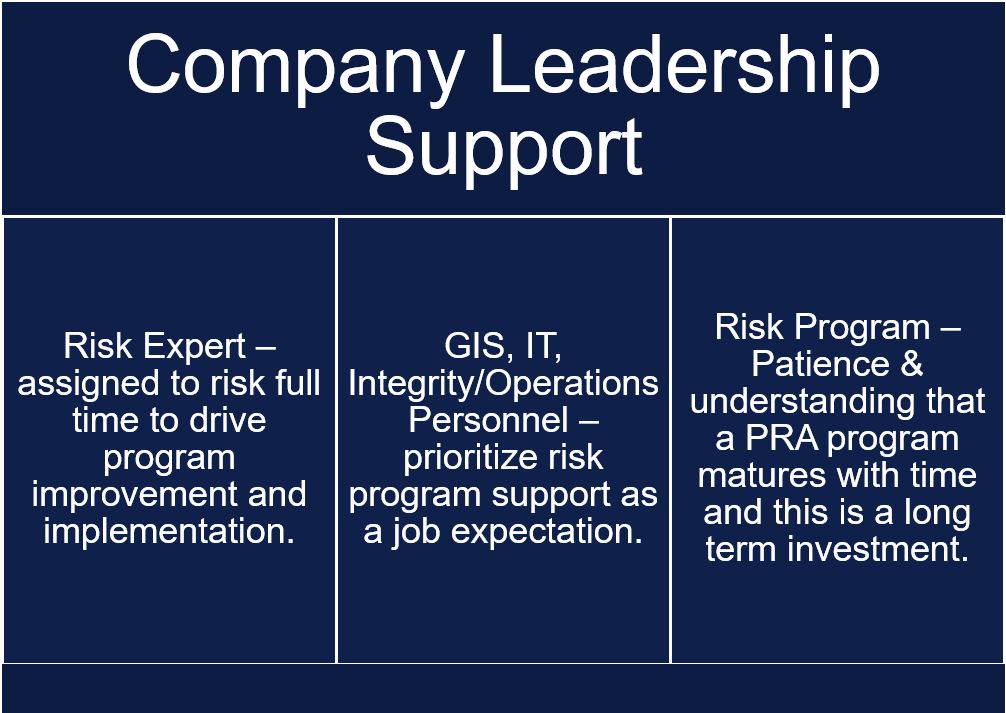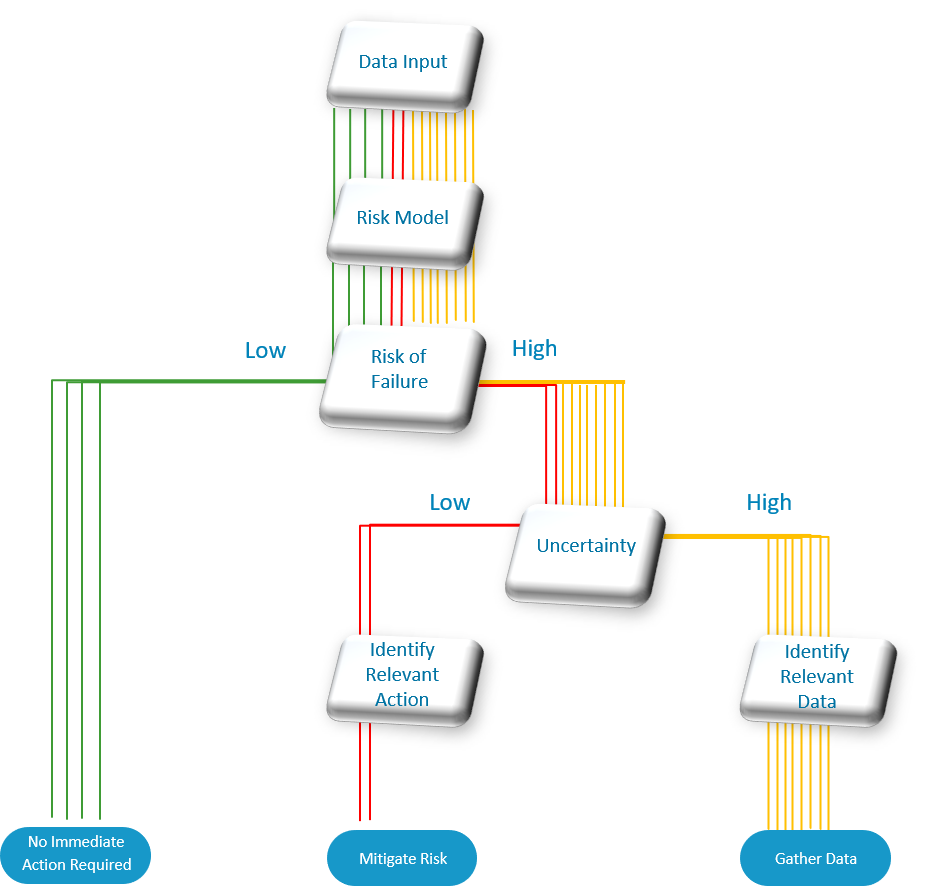What to expect when projecting
Level setting for a probabilistic risk result review
Finally, after months of waiting, worrying, and planning, the day has arrived for your risk results to be pulled out of their SQL tables and plopped into a Power BI file for your eyes to behold. There’s been quite a build up to this day and expectations are high. Promises of insightful probabilistic risk results that optimize integrity spending decisions have been made. What is the likelihood that the results will hold up to the expectations?
New users
If this is the first time running a probabilistic risk analysis (PRA) on a set of assets, the likelihood of having perfect results is low. This may come as a surprise to first time users after significant efforts to gather data and configure such a complex model have been made. Chances are that these assets were previously evaluated using a relative model which required less detailed information and planning but resulted in a tidy list of risk ranked lines from highest to lowest to support decision making.
First time users should expect results to differ from previous relative/indexed results. Often the expectation is that the probabilistic results should be similar to the relative results but with more detail and specific dollar amounts to help make spending decisions. Operators should keep an open mind and work towards understanding why the results are as they are rather than why they are not as the relative results were. The process of understanding the PRA results is the process of understanding how risk is being modelled. The more an operator understands the model, the better connected they are to the results and the more capable they will be to use them for informing integrity decision making.
New PRA users should also expect data issues. In the age of seemingly unlimited data, operators are continuously struggling to integrate their data records for newly acquired assets or assets that predate the internet with whatever the newest GIS environment it is that they’re transitioning to. Perfect data should not be an expectation but rather a long-term continuous improvement goal. Reviewing the PRA results will help prioritize data collection efforts and it should also emphasize the importance in taking time to carefully consider what defaults to use in the model when data issues are encountered.
Programmatic maturation
As new users begin to understand how the PRA model works and what data is driving each of the threats, the program will begin to mature. Data will begin to improve, the model will begin to be tailored to the operators assets and results will begin to show stability following each risk analysis iteration. The process will never end but will generally become more manageable as data improvements shift from gathering missing data to updating new inspection records or recent changes to the assets. Similarly, model updates will shift from correcting mistakes to discussing model improvement options with the operator. As the data and model improvements become more manageable and stable, the program matures.
Company risk expert – Setting expectations
Company risk expert should be made aware of the pitfalls a new user within their organization may experience and the signs of a mature risk program. It is incumbent of the company risk expert to continually level set the expectation of the new users as the program matures. Setting expectations and achieving them is paramount to maintaining user engagement and maturing the risk program. The company risk expert should work with other industry risk experts (specifically with the risk experts providing a new solution, if that’s the case) to gain a sensibility about where the PRA model is and what it’s capable of today and where it might be and what it may be capable of in the future. The company risk expert should effectively communicate expectations with the users and motivate their engagement by realistically setting future expectations while working towards them.
Company leadership – Patience and support

Company leadership should be programmatically engaged at the onset of deciding to transition to a PRA model. It will take time to complete the transision and the fruits of this labour may not be realized for a few years. Company leadership should exhibit patience in allowing the program to mature as it is structured to. Risk should not be looked at as a part-time job and leadership should champion the risk program. The risk program should be supported with at least one risk expert whose sole focus is on the risk program. The risk expert should also expect to get the support of the integrity, operations, GIS and IT teams as they are needed. When company leadership trusts in this process, allows the PRA risk program to mature, and supports it with the resources it requires, the long-term return on investment will be a risk program which can help focus integrity spending and decision making where it’s most critically needed.

Author: Alex Woll
12/10/2021 3:44:19 PM
